
Welcome to the second post in my series about teaching spelling!
Today we’ll be diving deep into the structure of words as I answer this question:
What do phonology, orthography, and morphology have to do with spelling?
Sometimes my oldest son likes to take regular English words and pronounce them “correctly.” For example, he’ll say, “The word raining should really be pronounced /r/ /a/ /i/ /n/ /i/ /n/ /g/.
I remember doing the same thing as a kid. And I would have been right, if English spelling was based solely on phonology.
But to be good spellers, students need knowledge in three areas: phonology, orthography, and morphology.

Phonology refers to how we distinguish, order, and say sounds in words.
Spellers use phonology when they break a word apart into its sounds to spell it. For example, when spelling the word mat, students can break the word apart into its sounds, /m/ /a/ /t/, before spelling each sound.
In order to use phonology, students must first have phonemic awareness, the conscious awareness of sounds in words – and the ability to blend and segment phonemes.

Orthography refers to the spelling system of a language.
Phonology only gets us so far when spelling, because English has approximately 44 phonemes (individual speech sounds) but at least 250 graphemes (ways to spell those sounds). There’s not a one-to-one match.
When students have a good knowledge of orthography, they know that ck is not used to spell /k/ at the beginning of a word. They know that the ay spelling for long a only appears at the end of a base word.
It’s important to combine spelling instruction with explicit phonics instruction so that students learn to apply these patterns.
(Here’s my free phonics scope and sequence if you need one.)
But even phonology and orthography aren’t enough.

Morphology refers to the smallest meaningful units of words. These can be base elements, connecting vowels, or affixes (prefixes or suffixes).
A long word can be a single morpheme. For example, the word alligator is a single morpheme.
Other words have multiple morphemes. For example, the word uncomfortable has four morphemes, as you can see in the following image from Phonics & Stuff’s free Morpheme Mapper tool.

When spelling the word roped, students need to use phonology, orthography, and morphology.
They use phonology when they break the word apart into its four phonemes: /r/ /o/ /p/ /t/.
They use orthography when they remember that this word spells long o with o-consonant-e.
They use morphology when they give the word an ed ending instead of using the letter t, because ed shows past tense. (They also using orthography when they remember the spelling rule that the e must be dropped before an ed ending.)

Just when you thought we were done, I want to take a look at one more element: etymology.
Etymology is the study of word origins. It can help explain unusual spellings.
For example, the word ballet is not spelled ballay because its origin is French.
Pharmacy is spelled with ph because it comes from the Greek.
If you or your students are ever curious about the history of a word, check out Etymonline. It’s free!
Final thoughts
Understanding the difference between phonology, orthography, and morphology can help you when examining your students’ spelling and determining next steps for instruction.
If a child spells the word JUMP as JUP, you can see that the child needs instruction in phonemic awareness (because the phoneme /m/ is not represented in the spelling).
If a child spells the word KICKED as KICKT, you can see that the child needs instruction in morphology (because the ed ending was not used to spell past tense).
If a child spells the word SKATED as SKAITED, you can see the child needs instruction in orthography: specifically, learning when to use the ai spelling to spell long a.
Learn more
- Watch Spelling in a Complex Orthography, with Lyn Stone
- Watch Spelling: Visible Language to Inform Instruction and Intervention, with Dr. Pam Kastner Tambra Isenberg
YOU’LL LOVE THIS PRACTICAL BOOK!
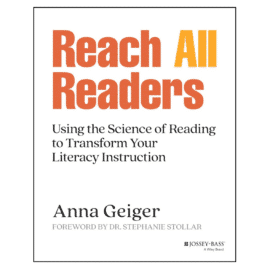
Looking for an easy-to-read guide to help you reach all readers? If you teach kindergarten through third grade, this is the book for you. Get practical ideas and lesson plan templates that you can implement tomorrow!
There’s a lot more to come in this series! Click on the image below to see all the posts as they are published.

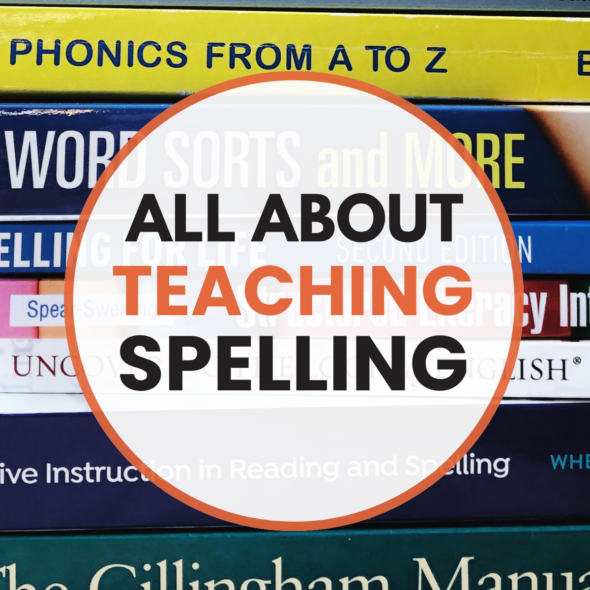

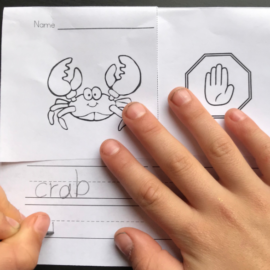
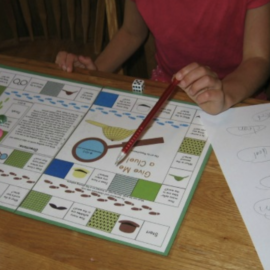
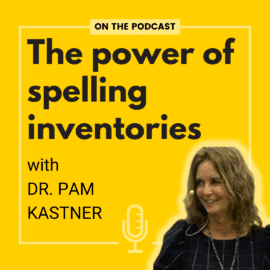
Claire Holliday
Hi,
Just to say I’m a big fan of yours and the Measured Mom. Thanks for all your inspiration and wisdom!
I came across a POM assessment via one of your podcasts. It was an assessment to identify if a child has phonological, orthographic and/or morphological needs. Could you point me in the right direction please? Thank you, Claire
Heather Groth, Customer Support
Great question, Claire! That was from the podcast interview with Shelley Blackwell. You can find it here: https://www.themeasuredmom.com/spelling-assessment-syllable-types-spelling-intervention-with-dr-shelley-blackwell/.